From 'Terminator' To 'The Avengers 2': 30 Years Of Bionic Heroes and Villains In Movies
"The Terminator": T-800 (1984)

"Short Circuit": Johnny Five (1986)

A random strike of lightning rewires Johnny Five, originally conceived as a weapon, into the fun robot who is at the center of the comedy/sci-fi film.
Twenty-seven robots, ranging from full-size animatronic robots to small puppets of the character, were created to bring the personable robot to life. The team focused working on the facial features of the bot to give it more human-like personality and expressions.
"RoboCop": RoboCop (1987)
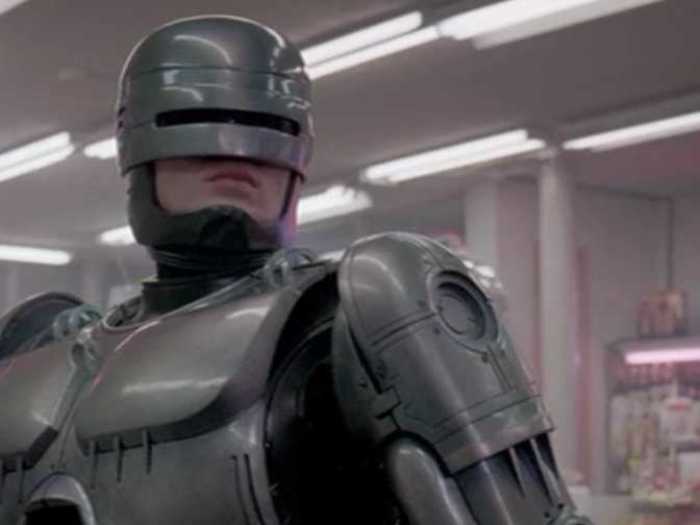
Thanks to Peter Weller's steely performance as the human-robot hybrid in 1987's "RoboCop," the film has grown a legacy as an action classic.
Though the movie may be best remembered for tagline "I'd buy that for a dollar," the RoboCop suits worn by Weller in the film were actually some of the most expensive objects on set, coming in at $1 million for the six suits combined.
A statue of the famed cyborg officer was recently commissioned in Detroit, the film's setting. The movie also received a reboot by Sony Pictures this year, though it wasn't as well received as the original.
"RoboCop": ED-209 (1987)
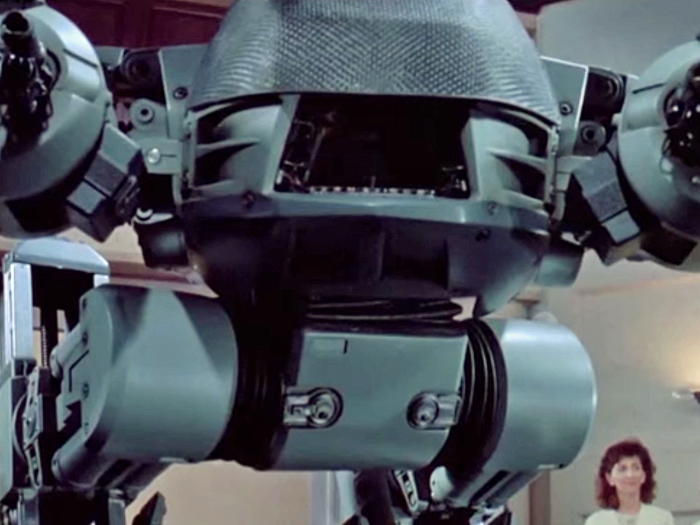
The ED-209 (the "ED" standing for Enforcement Droid) is the often "malfunctioning" antagonist to Peter Weller's RoboCop in the film.
The giant killing machine's design was based on real-life machinery like Vietnam-era Huey helicopters.
Visual effects master Phil Tippett used small models and "go-motion" animation (an update of "stop motion" that takes a shot frame by frame to boot up the ED-209) to make the bot take on RoboCop.
A 7-foot, 300-pound version was created that actually had some of its movements done by director Paul Verhoeven.
"Terminator 2: Judgment Day": T-1000 (1991)
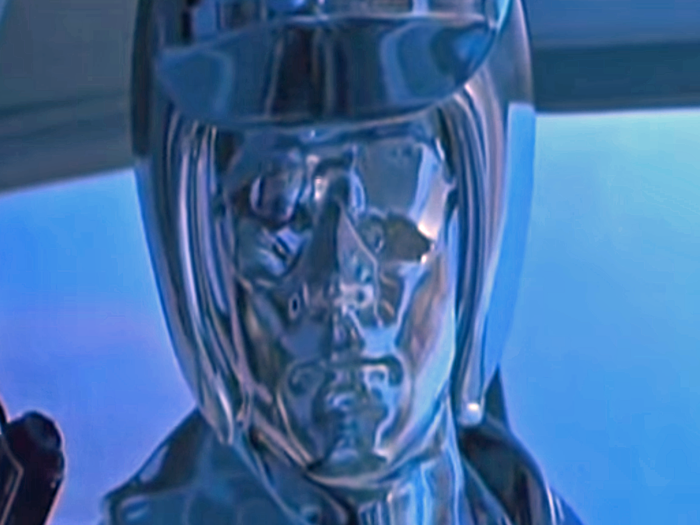
While "The Terminator" set the stage for film robotics in the 1980s, 1991's "T2: Judgment Day" pushed the genre to new levels with the T-1000 over the next decade.
The T-1000 was a terminator made of liquid metal who would take on Schwarzenegger's original T-800 in the film by being able to mimic the appearance of specific humans and use any part of his body as a weapon.
While some of the film industry's first computer morphing effects helped make the T-1000 stand out in the early days of CGI, what many don't realize is that it was also a mixture of Stan Winston's practical effects that helped bring real world physics to the liquid T-1000.
"The Iron Giant": The Iron Giant (1999)
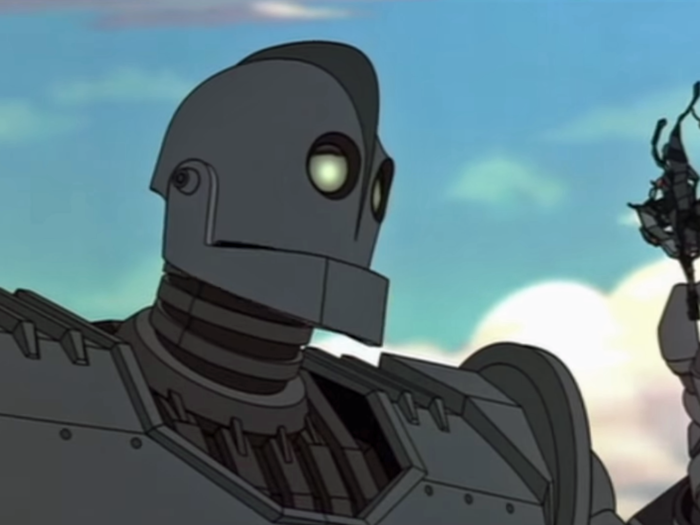
"The Iron Giant" may not have been depicted by a physical robot in 1999, but thanks to director Brad Bird and designer Joe Johnston, much of the robot's look and design comes from real life.
Johnston chose to base the robot (who was voiced by Vin Diesel) on Art Deco trains, while Bird chose to use CG animation instead of traditional 2D drawing.
"It is difficult for a human to draw a big, solid metallic object," Bird told IndieWire about his choice to use CG. "The giant originates from a different world, so we chose to create the giant using computer animation."
"Bicentennial Man": Andrew (1999)
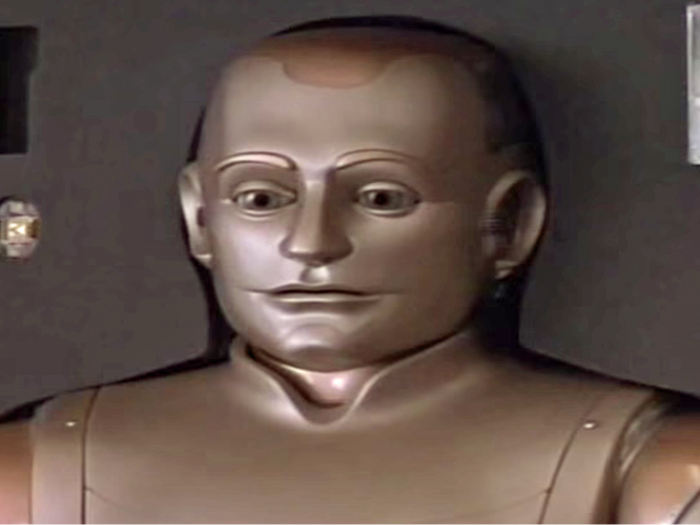
Taking place over 200 years, 1999's "Bicentennial Man" covers a grand array of characteristics of the future, including robots like Robin Williams' Andrew.
In the film, the robot Andrew is able to become more and more human via medical technology, eventually losing many of his robot qualities. This is why the film chose to have Williams inside the costume.
"They could have built a totally automaton robot," Williams told the Las Vegas Sun. "I think it was important to have it slightly strange from the moment the Martin family opens the box and activates Andrew, which is why I was inside."
"Star Wars: Episode I — The Phantom Menace": R2-D2 and C-3PO (1999)
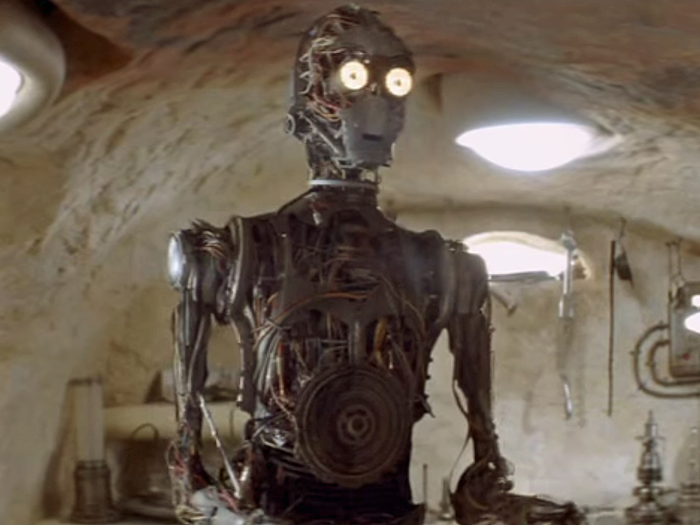
For 1999's "Star Wars: Episode I — The Phantom Menace," the iconic droids from 1977's "Star Wars" were altered a bit to keep up with the prequels' timeline and changes in technology.
For example, C-3PO — who was first seen with a gold coating — was left bare with his wires showing. This was done with Anthony Daniels (who played the droid throughout the saga) doing his lines off screen while a puppeteer who was erased later with CGI controlled the robot.
Both of the droids are so famous they're actually in the Smithsonian. A new generation of movie-goers will be able to travel with them to a galaxy far, far away once more when they return for the next chapter in the "Star Wars" series, 2015's "Star Wars: Episode VII."
"I, Robot": Sonny (2004)
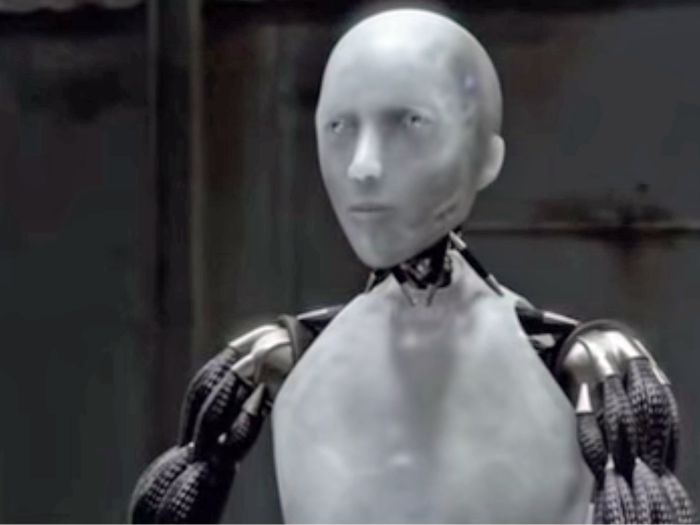
Based on the author Isaac Asimov's landmark sci-fi story, 2004's "I, Robot" includes one of the most life-like robots on the list, Sonny.
In the film, Sonny is charged with murder, but, because robots are built not to kill, it's up to Will Smith's Del Spooner to get to the bottom of the futuristic mystery.
Motion-capture technology helped Sonny become a reality. Actor Alan Tudyk was captured on set by 22 cameras while dressed in a green screen suit; the look of Sonny was created with the help of CG animation.
"Transformers": Optimus Prime, Bumblebee, and Megatron (2007)
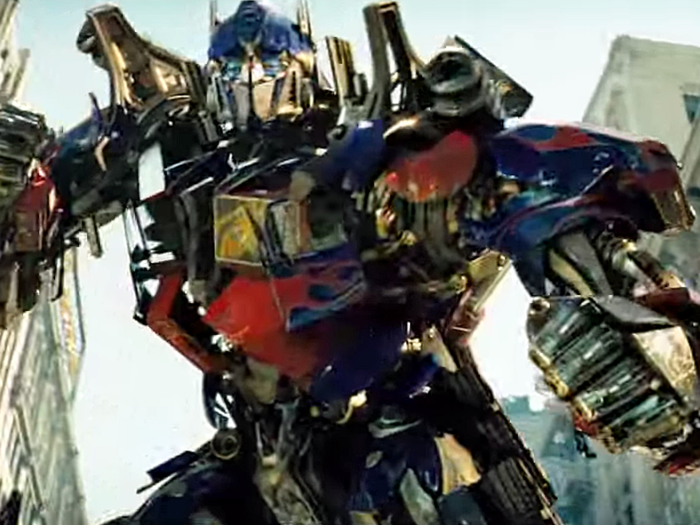
The shape-shifting robots made their first live-action debut in 2007, creating one of the most lucrative film series in the past 30 years.
Michael Bay's "Transformers" series has brought in $3.6 billion, and the films' visual effects have helped produce some of the most intricate robots on screen.
Seventy-five percent of the film is computer-generated, while some 350 visual effects artists (and the film's $150 million budget) built the robots backwards from their car counterparts (like Bumblebee and his Camaro) to give these robotic aliens a real-world moving parts mechanic feel.
"WALL-E": WALL-E and EVE (2008)
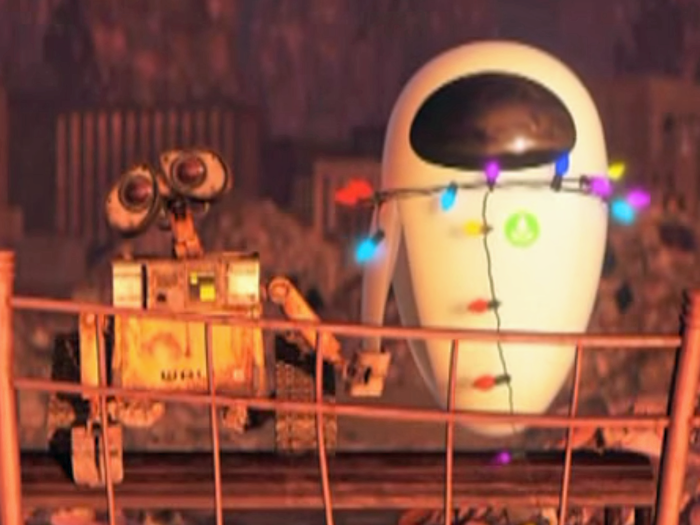
The 2008 film "WALL-E" may have taken place in the future, but many of the designs of the robot WALL-E and his crush EVE come from present-day tech, including Apple designs.
To figure out where tech would be going in the future, director Andrew Stanton spoke with Apple's primary designer Jonathan Ive, who helped the film's creator put together the robot EVE in the film.
“I wanted Eve to be high-end technology ... and I wanted it to be seamless and for the technology to be sort of hidden and subcutaneous," Stanton told Fortune. "The more I started describing it, the more I realized I was pretty much describing the Apple playbook for design.”
WALL-E, was created on a napkin in small lunch meeting at Pixar years before.
"Iron Man": Iron Man (2008)
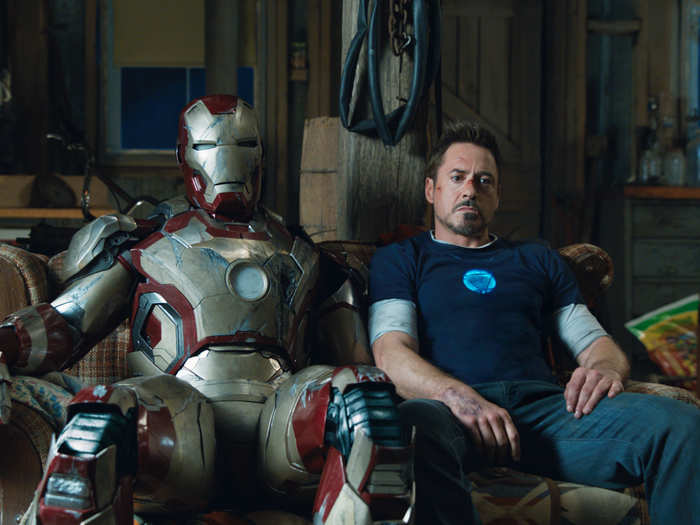
Unlike the other robots on this list, the Iron Man is a suit created by the overly confident, and often arrogant, Tony Stark, who built his own personal crime-fighting machine to turn himself into a superhero.
To create the perfect real-life Iron Man for the 2008 film, visual effects studio Stan Winston created drawings, 3D models, and full body casts of Robert Downey Jr. to build an actual functional suit.
CGI artists at Industrial, Light, and Magic helped audiences see Stark inside the suit and soar to great heights.
"The Day The Earth Stood Still": GORT (2008)
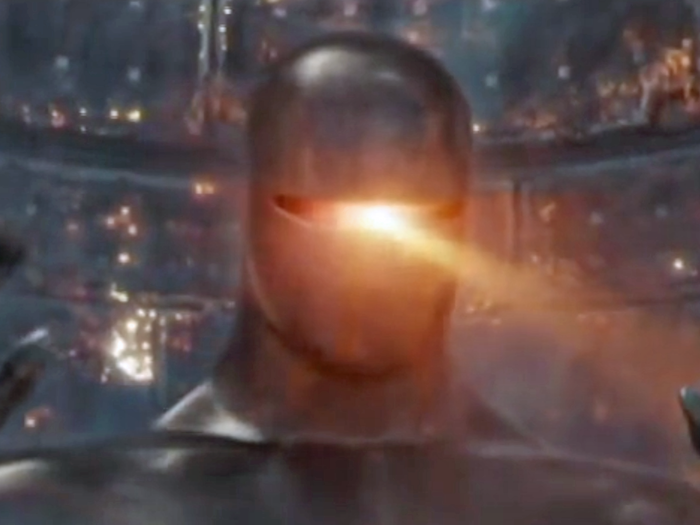
The original "The Day The Earth Stood Still" in 1951 introduced us to GORT (Genetically Organized Robot Technology), an 8-foot-tall speechless robot who acts as a semi-bodyguard to the alien Klaatu.
So when a remake of the film was made in 2008, filmmakers had to figure out a way to bring back the icon by giving him a 21st-century update.
They did this by recreating the robot completely via CGI to make him over 20-feet high. Afterward, GORT's backstory was updated so he was built by nano-technology (or smaller robots that make up the larger GORT).
This is different from the original film, in which GORT was just a giant metal robot who was actually made using a rubber suit and aluminum paint.
"Terminator Salvation": Marcus Wright (2009)
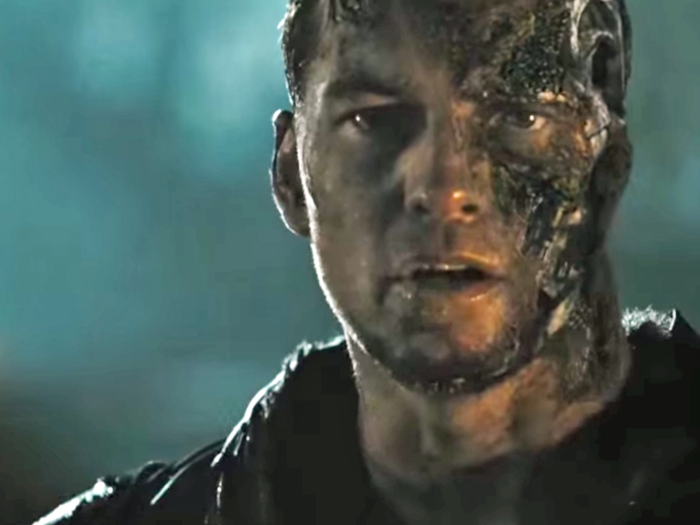
"The Terminator" series has redefined robotics in film multiple times over the past 30 years, so when 2009's "Terminator Salvation" hit theaters, filmmakers needed to change up the formula again.
Marcus Wright (Sam Worthington) was the first machine in the series to appear as a human only to find out later in the film he was, in fact, a terminator.
It took a combination of visual effects and make-up to bring Worthington to life. This included the actor spending six to eight hours a day getting prosthetics applied that would later be mixed in with CGI visual effects.
"Iron Man 2": War Machine (2010)
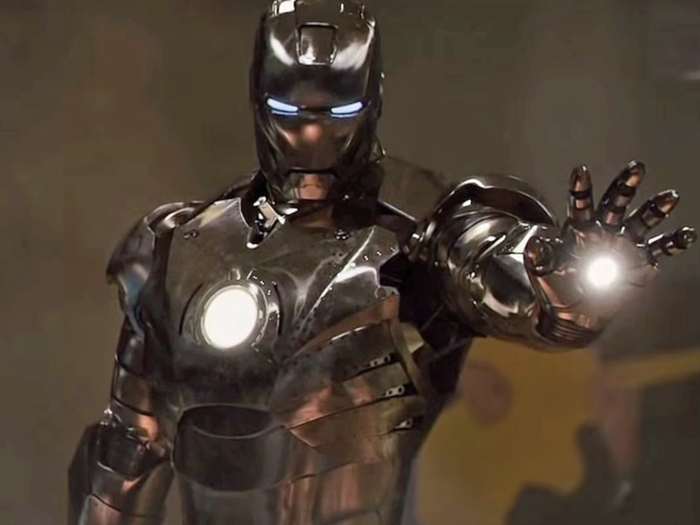
After the huge success of 2008's "Iron Man," the 2010 sequel upped the robot ante by introducing Tony Stark's partner in robotic justice, War Machine.
War Machine — much like its gold and red counterpart — is controlled by a man in the suit. This man, Col. Rhodes (Don Cheadle), is a bit more subdued than Stark but has his own power in the Marvel universe.
For the big showdown between Rhodes and Stark midway through the film, the visual effects team found it important to have details in each suit that made them distinct from each other (one designer saw the suits as different as a PC and a Mac).
The character returned with a red, white, and blue suit version and was called the Iron Patriot for 2013's "Iron Man 3."
"Thor": Destroyer (2011)
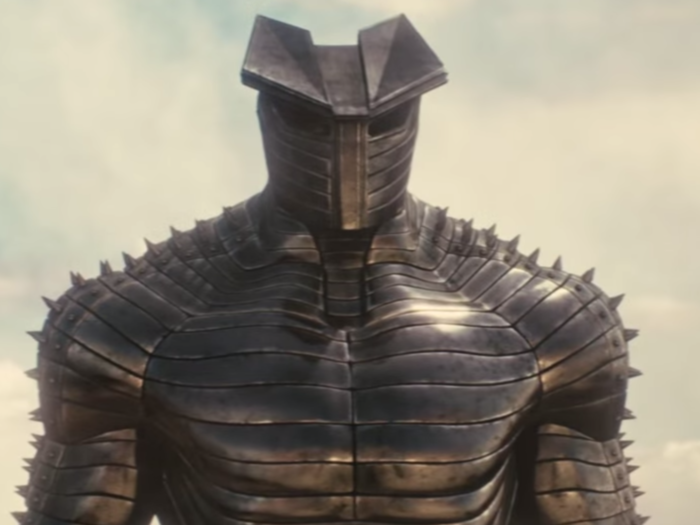
Marvel's Destroyer is a suit of armor that comes to life to protect those in the mythical land of Thor, Asgard.
In 2011's "Thor," the Destroyer becomes enchanted by Thor's brother, the anti-hero Loki, and is sent to Earth to destroy the superhero in an epic battle at the climax of the film.
To create a robotic creature that could take on the god of thunder, the film's VFX team animated hundreds of metal pieces that felt the weight of a suit of armor but could move against Thor in battle.
"High-velocity fluid simulations" and geometric renders were also used to give the Destroyer its realistic fiery core.
"Pacific Rim": Gipsy Danger (2013)
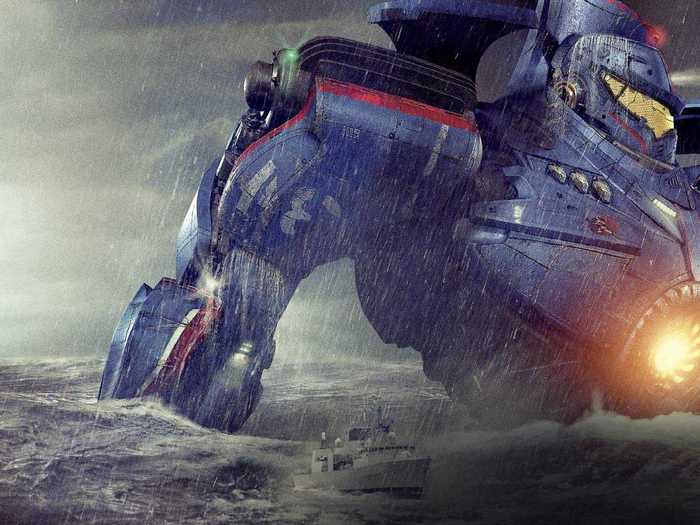
When director Guillermo del Toro put together his 2013 rock-em-sock-em robot vs. monster film, "Pacific Rim,” one of the biggest challenges was creating visual effects that seemed towering on film.
"Our No. 1 challenge on this movie was scale," visual effects artist Hal Hickel told USA Today. "We've animated big before, but not this big."
For the film's main robot, Gipsy Danger, the visual effects team at Industrial Light & Magic made sure even the smallest detail like the pistons of the machine moved seamlessly.
Visual artists also looked at real life battleships to get a sense of grand scale real-life working machinery.
"Elysium": Homeland Security Robots (2013)
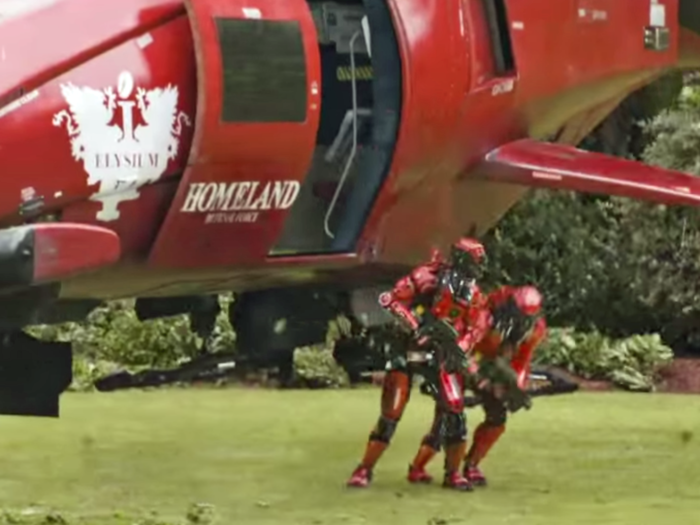
Set in the year 2154, the futuristic film wanted to depict real-world robots in a fictional future world.
This is why the security droids who try to keep Max De Costa (Matt Damon) out of the heavenly space station Elysium seem so real.
Most of the robots in the 2013 film are completely digital, including any of the droids that move, according to Shawn Walsh, the film's VFX producer. The film pulled off the real look of the robots by studying contemporary real-world machines.
"The stuff from Honda, DARPA, and Boston Dynamics, even down to production-line robots," Walsh said. "There's a never-ending supply of fully functional inspiration."
"X-Men: Days of Future Past": Sentinels (2014)

In "X-Men: Days of Future Past," the Sentinel robots were created to wipe out the X-Men. They did such a good job that Wolverine has to be sent back in time to stop it all from happening.
The film's production designer, John Myhre, created two versions of the robots for the film. The 1970s versions reflect the iconic purple machines from the popular comic book story, while the futuristic ones are a completely new design.
Myhre created computer-generated biomechanical bots that could shape-shift using magnetic plates that make up their bodies. For Myhre, doing this actually gave the X-Men a real threat and made the Sentinels capable of anything.
"The Avengers: Age of Ultron": Ultron (2015)
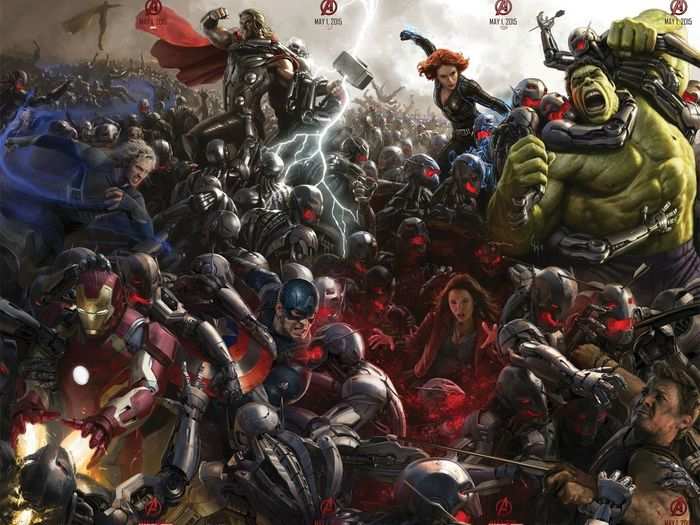
Next summer's "The Avengers: Age of Ultron" pits Iron Man, Captain America, and the rest of the Avengers against a robot run amok, Ultron, and his army of perilous drones.
Created by the Tony Stark as a force meant for good, Ultron plans to "save the Earth" by killing every human on it (and if Comic-Con footage is any indication, all of the Avengers, too). Director Joss Whedon has described the sequel's villain as "genuinely disturbed" and "everything a robot never is."
Marvel and Disney are using motion-capture technology and body scans of actor James Spader to bring the iconic villain to screen. It's the same technology used for the Hulk in 2012's previous installment.
Now that you've seen the best robots of the past 30 years ...
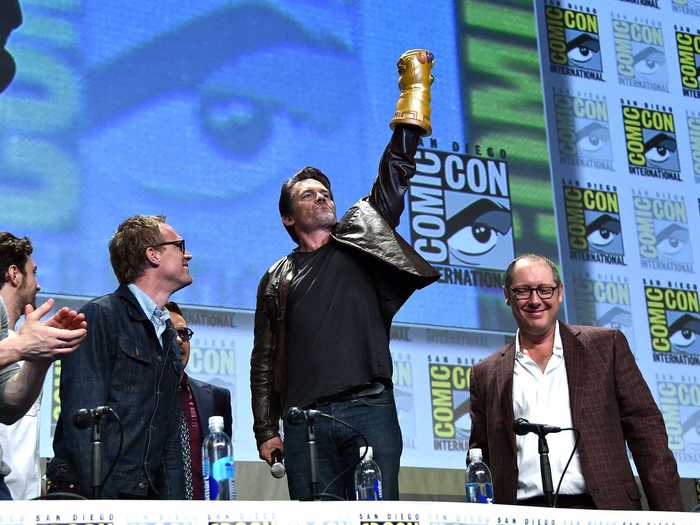
Popular Right Now
Popular Keywords
Advertisement